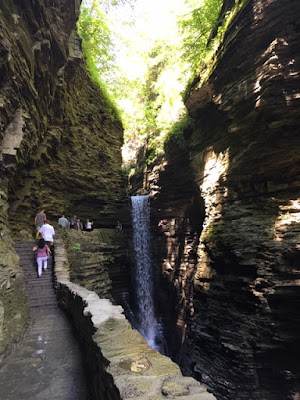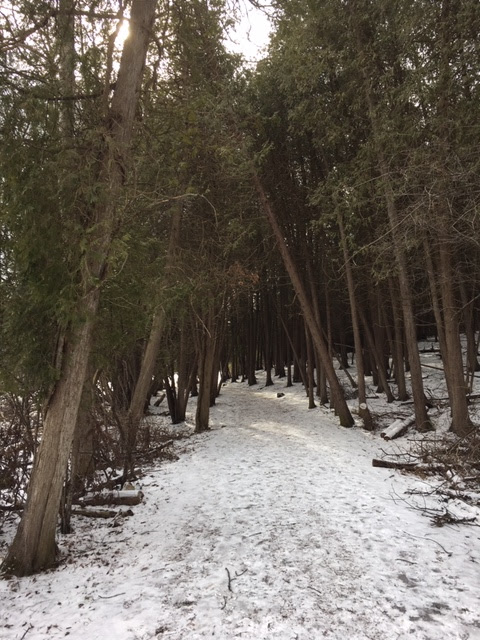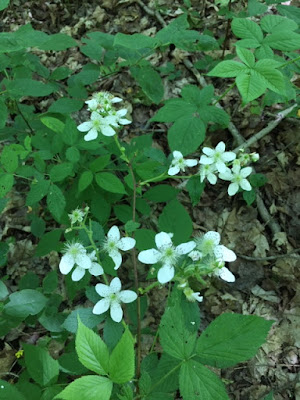Watkins Glen State Park
At the southern tip of Seneca Lake sits the small, charming village of Watkins Glen, NY - home to what many consider the best park in New York State's whole system. This is a place, admittedly, I've visited once before and absolutely loved but put off coming to again because I knew it is popular and gets crowded with tourists. But one day early in July, I finally put that all behind me and decided to take the drive out to the park and revisit its famous deep gorges and plunging waterfalls like I had several years earlier.
Watkins Glen State Park isn't necessarily wide but it is long - longer, in fact, than Robert Treman State Park, and, as a result, there are within its boundaries many enclaves that call for exploration. Of course, the most popular path through the park is the Gorge Trail (1.5 miles long) and the Indian Trail (1.0 mile long) which, if taken together, form a flattened type of loop through and above its gorges sliced deep by the lengthy Glen Creek. On this early summer outing, I chose to hike this loop in addition to a magnificent section of the Finger Lakes Trail (FLT) that runs west through the park's southern edges through some interesting terrain (more on that later!).
Just like my experience at Treman Park in May 2019, the pictures I took here try to capture the unique beauty but cannot possibly get it all. In other words, one should actually visit the park themselves to see with their own eyes the stunning waterfalls and limestone formations. Another note: with the onset of Covid-19, I took precautions to distance myself from other people on the trail, and when this wasn't possible, I made sure to wear my mask. Once off the Gorge Trail, however, there were very few others around and "social distancing" became much easier, thankfully.
I arrived at the park entrance (newly rebuilt), passed a gift shop, and began on the Gorge Trail.
The trail descended into almost cavern-like, incredibly beautiful passages where water rushed through on its fast-moving journey to Seneca Lake. Keep in mind the stairs of these gorges were painstakingly built into the rock by Civilian Conservation Corps volunteers way back in the 1930s.
Beyond the first series of waterfalls comes this old suspension bridge, crossed by another trail, which also happens to be listed in the park's guide map along with other points of interest.
Watkins Glen State Park isn't necessarily wide but it is long - longer, in fact, than Robert Treman State Park, and, as a result, there are within its boundaries many enclaves that call for exploration. Of course, the most popular path through the park is the Gorge Trail (1.5 miles long) and the Indian Trail (1.0 mile long) which, if taken together, form a flattened type of loop through and above its gorges sliced deep by the lengthy Glen Creek. On this early summer outing, I chose to hike this loop in addition to a magnificent section of the Finger Lakes Trail (FLT) that runs west through the park's southern edges through some interesting terrain (more on that later!).
Just like my experience at Treman Park in May 2019, the pictures I took here try to capture the unique beauty but cannot possibly get it all. In other words, one should actually visit the park themselves to see with their own eyes the stunning waterfalls and limestone formations. Another note: with the onset of Covid-19, I took precautions to distance myself from other people on the trail, and when this wasn't possible, I made sure to wear my mask. Once off the Gorge Trail, however, there were very few others around and "social distancing" became much easier, thankfully.
I arrived at the park entrance (newly rebuilt), passed a gift shop, and began on the Gorge Trail.
The trail descended into almost cavern-like, incredibly beautiful passages where water rushed through on its fast-moving journey to Seneca Lake. Keep in mind the stairs of these gorges were painstakingly built into the rock by Civilian Conservation Corps volunteers way back in the 1930s.
Beyond the first series of waterfalls comes this old suspension bridge, crossed by another trail, which also happens to be listed in the park's guide map along with other points of interest.
In spite of the crowds and overall business of the walkway, by this point in the hike I was immersed in the splendid scenery and not at all bothered by other distractions. Beyond the bridge, wonderful pools of water emerged around the next corner.
And let's not leave out towering limestone walls . . .
Up next: the "Glen Cathedral" and "Rainbow Falls"!
It turned out the last portion of the Gorge Trail was closed off for construction, so going further wasn't possible nor safe. But no issue, as I was awarded with two options to extend my hike: to the right a connection with the Indian Trail which I would much later return back on, anyway. And, to the left, a stone stairway connection to the Finger Lakes Trail. So I went left.
These stairs made a good resting spot to have a small snack and cool off for a bit. Once on the FLT, I veered west and traveled a wider section of path under large, old hemlocks.
The July sun was successfully warming up the air by the time I reached, along the FLT, another bridge - this time an old railroad bridge.
The trail went under the bridge, and past this point was a notably quieter, more secluded wooded stretch of mixed hardwoods and wildflowers.
Views below the sloping ground of Glen Creek greeted me next, and I tried to capture this image.
Punch Bowl Lake and its surrounding environs is what I next encountered. This is, frankly, a most beautiful corner of the park and I'm surprised more people don't come to this spot (not complaining about it, either.) Punch Bowl Lake has a large dam and a wooden picnic shelter with an old grand fireplace for those who want to stay a little longer.
I couldn't help but stay here a few minutes and soak it all in, as they say. There was enough exposed pond shore to walk up to the water without wading knee-deep in shrubs and grasses. Beyond Punch Bowl Lake, the FLT ventured through more forests of gentle sloping land, passing under more hemlocks, yellow birches, oaks, and red pines.
After a very brief roadside walk where the FLT crossed a park entrance lane, the trail veered left back into the woods before reaching yet another set of old stone stairs and yet another creek-cut gorge (it's amazing how many of these there are in this place!).
Hidden Valley Camp was just a short reach past the smaller gorge pictured above. There were a few cabins by the side of the creek.
The last section of the FLT I explored before turning back toward the park's main gorges featured a changing landscape. I came upon an intersection with a red/orange blazed double-track trail that headed south, beginning at an open field. To my right, another somewhat steep path led to the shores of another, even larger lake where I saw a group of people camping and a fisherman in the distance casting his line. It was easily one of the most picturesque turn-back points in any hike I've taken recently!
I spent at least a good ten or fifteen minutes at these waters. It was a lovely, sun-drenched spot. Returning, but this time eastward on the FLT, I snapped a few more photos of some things I missed.
As I mentioned previously, I returned back to the park entrance along the Indian Trail, which, for the most part, was unremarkable save an unexpected cemetery view and high overlook of the valley cut by Seneca Lake far below.
Hiking Watkins Glen State Park was a great experience and one I would repeat in the years ahead. It truly is well-kept and well-loved by the people who run it and those who come to visit. This hike took me almost exactly four hours to complete and, after all was said and done, clocked in at 5.3 miles length.










































































Comments
Post a Comment